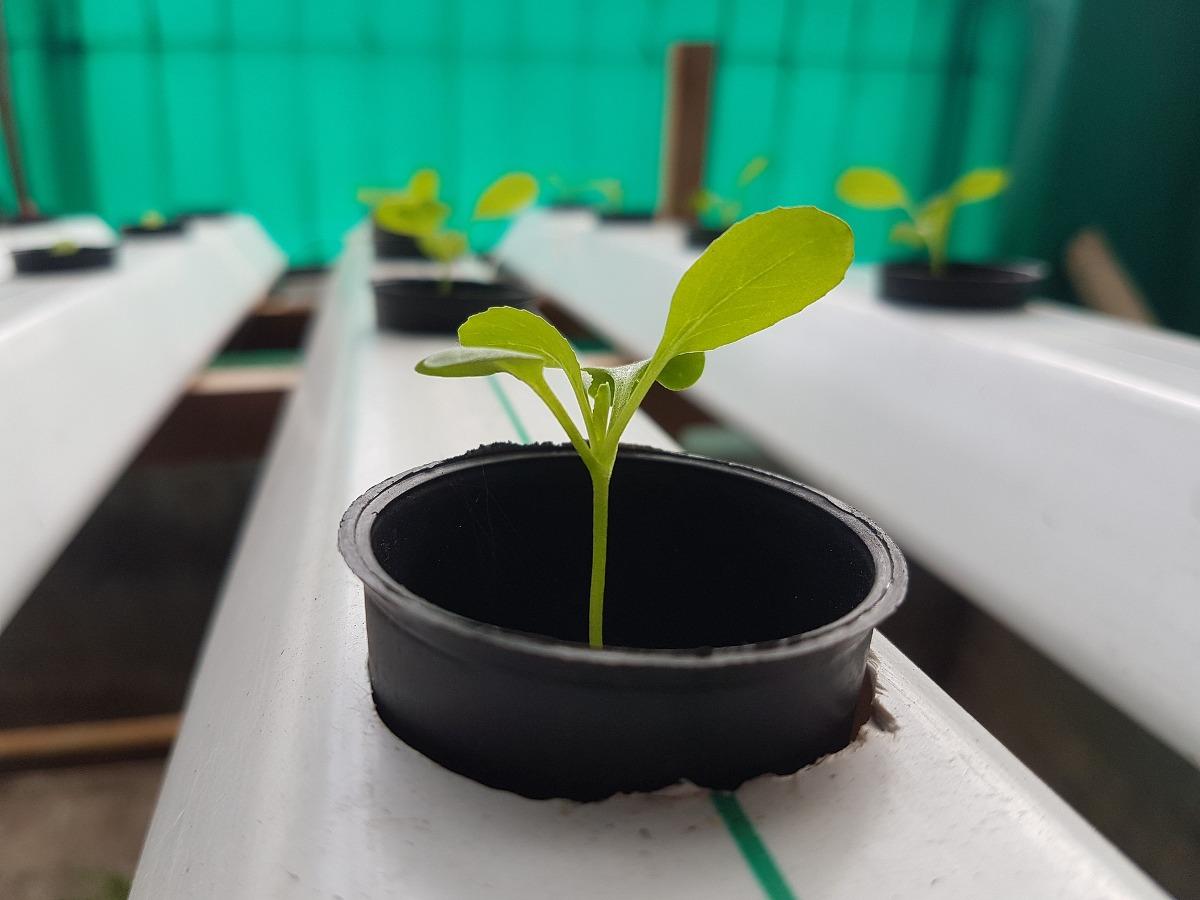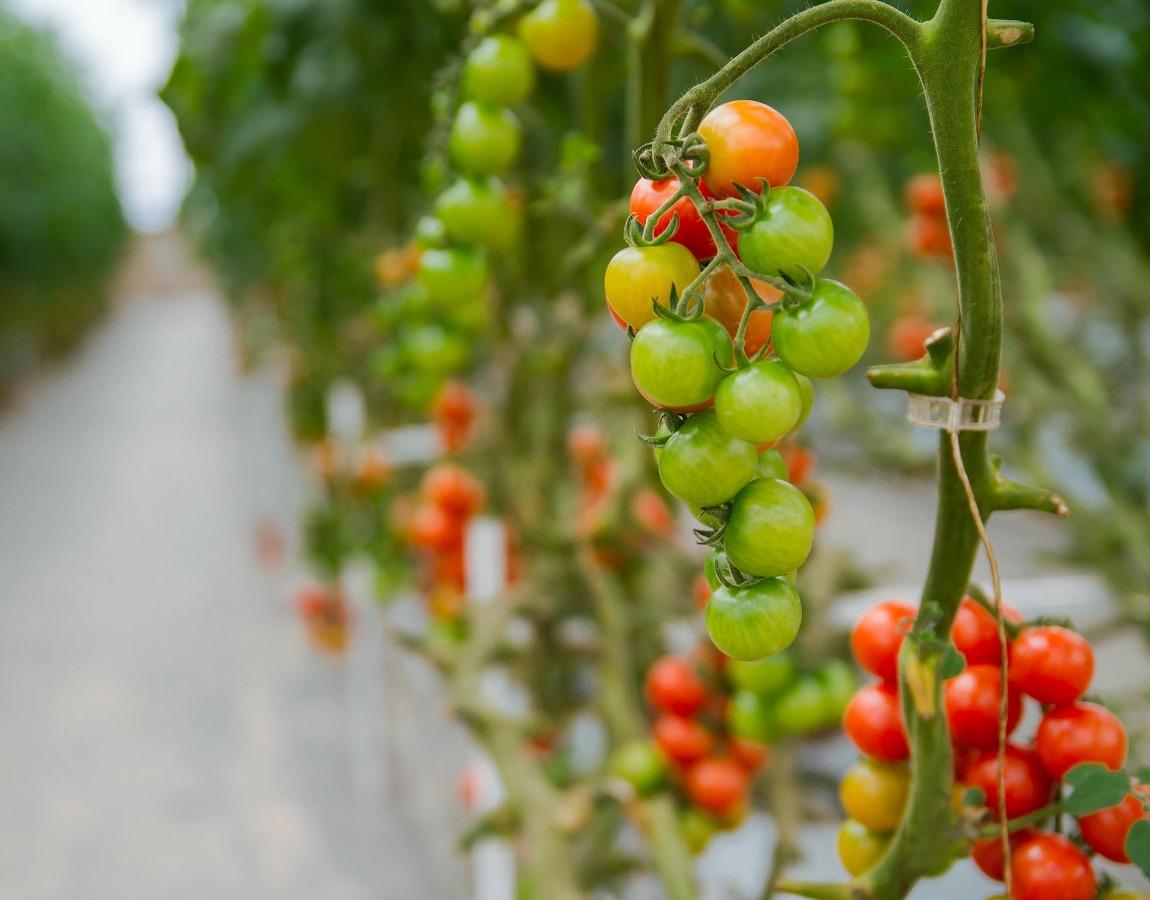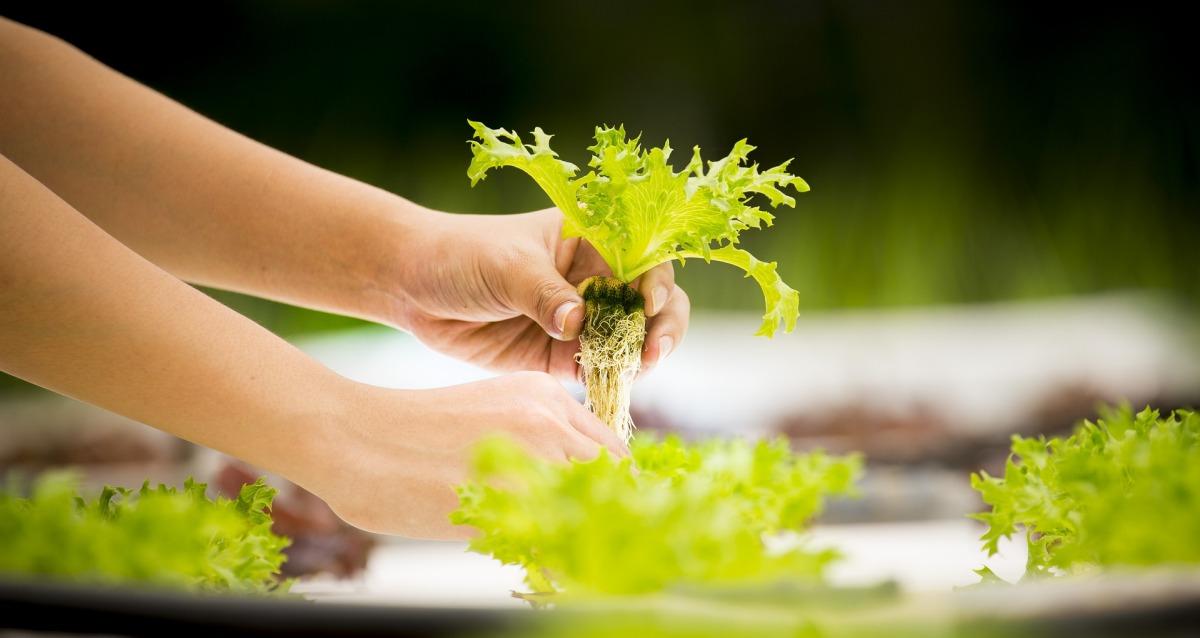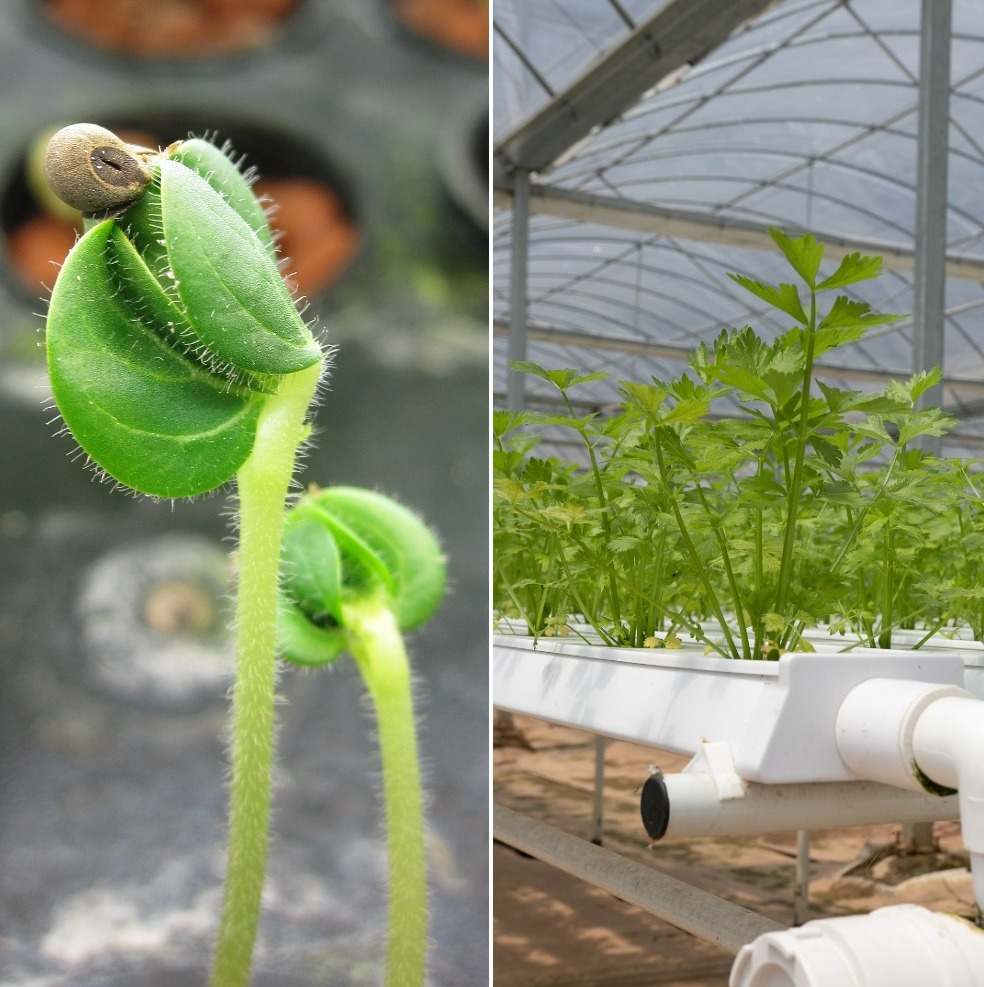Introduction to an organic hydroponics farming
The hydroponic farming industry is ever-evolving and continually bringing new, innovative products to consumers. This happens within every subcategory throughout the hydroponic industry as well; lighting, ventilation, soils or media, nutrients, and pest control are all evolving in their own right. With more and more indoor horticulturalists paying attention to the potentially harmful chemicals associated with insect control, there has been a tremendous advancement within the subcategory of organic pesticides.
A step by step guide to organic hydroponics farming
In an organic hydroponics farming, organic fertilizer is degraded into inorganic nutrients by microorganisms in the hydroponic solution by ammonification and nitrification process. The microorganisms are cultured with a process of multiple parallel mineralizations. The culture solution can be used as the hydroponic solution and the main principles of organic agriculture are health, ecology, fairness, and care. Then, the culture solution can be used as a hydroponic solution. The practical method of organic hydroponics system is developed in the National Agriculture and Food Research Organization (NARO). With its high rate of water-saving, controlled growth which decreases the need for pesticides and fertilizers, and no heavy human labor, hydroponic growing systems have a great potential for going organic. Organic hydroponics is a hydroponics culture system which is managed based on organic agriculture farming concepts. The conventional hydroponics system has a difficult time using organic compounds as fertilizer.

The fact is that using natural and “organic” products allows people to use a wider variety of elemental nutrition unconsciously without select to bring these materials to the table because they are diverse by Nature. This is the basis for the accepted concept that hydroponics delivers higher yields, but “organics” brings a higher quality. There is truth to this idea and it is also true that you can get the best of both worlds. In the simplest terms, the hydroponic system is an emphasis on growing the plant, while growing in soil is a focus on growing the soil, or more directly, growing microorganisms. Microbes are beneficial to plants directly through making perfect plant food and helping them eat it, and indirectly by acting as a preventive measure towards the root and foliar disease, and pest infestations.
Different types of organic nutrients for the hydroponic system
Hydroponics system is a technique used by farmers to grow plants without soil as the growth medium. Instead, the plants are grown in the organic nutrient solution. At times, gravel is used as it does not hold water too much. This process makes use of the need to give plants exactly what they want, how they want it, and when they need it. The plant is grown in the perfect medium with a pH level that is adjusted and the right nutrients. The result is faster growth and healthier plant growth with maximum yield.
A few different approaches are using organic nutrient sources in a hydroponic system. It can be difficult to obtain a balanced and suitably high ratio of all the essential minerals from organic sources alone, so experimentation with different products is helpful. Vermiculture is a highly efficient method of processing high-mineral raw materials, such as manures, limestone, blood and bone, fish meal, seaweed meal, guano, and others, into usable, mineralized hydroponic nutrient solutions that also give the benefits of a diverse population of beneficial microbes. The correct type of nutrient needs to be used; keeping in mind that different hydroponic plants choose different types of organic nutrients in different quantities.
Garlic and Clove extracts
Many of the new organic insecticides available are garlic or clove based. Both of these powerful herbs can destroy bugs on contact, but work effectively as an insect deterrent. Insects that sense clove and garlic will immediately pack up and find another place to live.
Rosemary extracts
Rosemary extracts have special compounds that block the octopamine receptors of many insect varieties. Then, this causes paralysis and eventually, death for insects sprayed with rosemary extract solution. Octopamine receptors are specific to insects so there are no adverse effects when sprayed on or around mammals or birds.
Grow hydroponics without chemicals
Plants need certain elements to grow, but they can get these from either man-made or organic sources. If you’d rather avoid creating a hydroponic soup from bottles full of chemicals, you can go with a more natural solution and limit nutrient sources. While it can be harder to grow hydroponic plants this way, since you don’t always know what they’re getting from the water, you will know for certain that your results are completely organic.
Organic tea
First, fill a large bucket about halfway full of compost or worm castings, or a mix of the two. And, make sure that whatever you use is well-aged and is broken down into a brown, crumbly dirt-like substance.
Then, add enough water to fill the bucket almost to the top. Stir the contents well, and let it sit for at least 24 hours and the water should be dark brown before you use it.
Place several layers of cheesecloth in a colander and then set it over an empty bucket.
Pour the brown water from the compost very slowly through the colander. Use this liquid to fill the reservoir on the hydroponic system instead of using man-made additives.
Replace the nutrient liquid at least once a week or more if your plants show signs of nutrient deficiencies.
EC and pH levels for an organic hydroponics farming system
Electrical conductivity (EC) and pH control are different in organic hydroponic systems. Many organic nutrients don’t conduct electricity, so EC readings could not be a true indication of the concentration of an organic solvent. A garden’s pH levels tend to run higher in a healthy, organic system than many growers are used to maintaining in a standard hydroponics system.
Since pH-lowering acids generally used in hydroponics such as nitric and phosphoric acids are not organic, pH is best left to stabilize on its own. Some organic nutrient products naturally have a high pH level, so growers should try to select those that have a more suitable pH range for use in soilless systems.
The organic hydroponics farming procedure
In case if you miss this: One Acre Farming Model, Income, Profit, Ideas.

In the organic hydroponics, it is extremely simple to mix a batch of organic nutrients adequate for the needs of any plant. One can use a tea made from high-quality compost, or a basic solution of 1 1/2 teaspoons fish emulsion, 1 1/2 teaspoons liquid seaweed, and a teaspoon of blood meal to each gallon of water. The mix varies, mainly depending upon the type of plant being grown. Less blood meal must be used with flowering and fruiting produce than with leafy crops. Other nutrients can also be added they are blended eggshells, for example, might be helpful when added to a cabbage crop.
The fish emulsion, seaweed, and blood meal recipe on lettuce plant during the winter. By spring, two successful lettuce plants had been harvested, so the project workers decided to try the nutrient solution with a tomato crop. Two large 5-by-7-foot cold frame boxes prepared. One was fitted with hydroponic accessories and then filled with a growing medium of hall perlite or a lava product and half vermiculite (made from mica) to which fifty pounds of sand was added. This was found, after much experimentation, to be the best nutrient medium. The other box was provided with the normal drainage holes, and filled with the conventional soil mix, and fertilized on a regular schedule.

For the first month of the summer, the 36 tomato plants being grown in a hydroponic system lagged behind the 36 soil-grown tomatoes. This was no seedling tomatoes had been started in a soilless mix and it was necessary to take the plants from the soil, wash the earth off their roots, and set them in the hydroponic box.
By July, the hydroponically grown tomatoes were larger, sturdy, and had more fruit set than the soil-grown controls. They had much greater resistance to the aphids which infested downtown Montreal last summer. This increased resistance is a good indication that the plants were receiving good nutrition from the organic mix. Comparisons of the final yields are not yet obtainable, but by mid-August, the hydroponic tomato plants were producing about third more tomatoes than the soil-grown controls. Then, there is no doubt that this simple nutrient solution provides excellent nourishment.
The NFT hydroponics organic farming system
The only medium utilized in the system is a small plug of soilless material used to keep the seed from floating away during germination. The plug is located in the production channels, but it plays no role other than to stabilize the seed. Then, the channels are continuously fed a solution of fertilizer ingredients that were produced in an organic digestion system.
You may also check this: Aquaponics Farming Business Plan for Profits.

The digestion system, the source of the nutrient solution that is circulated through the growing channels, uses a shredded solid that gives surface area for the growth and activity of the micro-organisms. Fertilizer ingredients are periodically added to the organic digestion system, where they are processed by the micro-organisms. The effluent from the digester is fed into the recirculating NFT feed system to give nutrition through the roots of the plants.
The size of the digester should be in correct proportion to the production system needs to provide adequate organic hydroponic nutrients for the plants to achieve optimal growth. Though, the system cannot be oversized relative to the system’s needs. If the organic hydroponic nutrients formed by the digestion system are not used by the plants, they need to be disposed of in some other way to ensure the ongoing health of the micro-organisms. This makes an unwanted issue for the grower. Proper sizing of the system is very important for optimum operation and the survival of the microbial population.
Pest and disease control in organic hydroponics farming
Once growers have established a healthy root zone and are feeding plants a proper organic blend of nutrients, the next step in organic production tends to be pest and disease control. Synthetic pesticides or chemical pesticides are not considered organic, which eliminates some of the highly effective controls hydroponic growers depend on.
With organic hydroponic production, the prevention of pest and disease problems becomes even more essential. The use of screening vents, double-door entries, close inspection of planting material entering the growing area, sticky indicator traps, and careful monitoring of health is essential in preventing or catching infestations early on. Organically allowable pest control products, indoor gardeners are already familiar with neem oil and neem extracts. Many neem spray products are considered organic and then help control a wide range of insect pests.
Beneficial and predator insects as part of an integrated pest management program are widely used by organic growers, and there is a range of microbial spray products on the market such as BT for caterpillars. Disease control can be more complicated. Fortunately, biological controls such as Beauveria spp. and non-synthetic fungicides based on microbial species are available.
Also, the successful organic hydroponic system has some errors. What works for one grower cannot work for another. There is a lot more to the biological side of organic plant nutrition than we understand, much of it to do with microbial balance and populations in the organic nutrient solution.
Using neem oil in the organic hydroponics farming
A specific kind of natural oil called neem oil can be beneficial to hydroponic growing plants. It is a kind of natural pesticide.
Some steps to effectively using neem oil on hydroponic plants;
- The first step is to choose quality neem oil products. You want pure and also refined natural oils. You can get some types of prepackaged products that are already inspected and designed for quality.
- It’s going to be necessary to dilute the neem oil unless you buy an already diluted product. Just a little bit of this stuff can go a long way, so read instructions carefully and then measure out the parts per million that you’re going to use to apply to plants.
- The next step is to selectively spray the plants where aphids or whiteflies or other bugs may be likely to congregate and eat away at your crops. Some of the most common plants to apply the neem oil to are plants such as kale, chard, lettuce, cabbage, spinach, or other greens. Many of these leafy plants get attacked by certain pests that will chew through plants pretty quickly but they don’t like neem oil, and it may be enough to send them on their way.
- In general, experts discourage beginners from trying to use neem oil in the reservoir. First of all, it’s not going to be effective against bugs that could eat plants. Secondly, it kills or destroys plants or stunts their growth.
- The best method to use neem oil is to get a spray bottle and fill it with a diluted neem oil solution. Then spray it on leaves and stems above the pots, and you can get some protection for bugs, as well as a neatly oiled look.
- Since you’re already spraying the plants, you can add helpful nutrients to your neem oil solution. Contrary to popular belief, plants can take in nutrients through their leaves, or through small glands called stomata located along the stem.
Certified organic hydroponics farming system
If a hydroponic system meets the guidelines set forth by the National Organic Program (NOP), then it is considered organic. While there is no soil used in the hydroponics system, a system that uses microbial activity to produce the plant nutrients can meet certified organic standards. Such a system has been developed using the nutrient film technique system. The system is built using approved organic materials and uses a nutrient solution that is produced by an organic digestion system. Also, produce using this system is both hydroponic and organic.
Difference between synthetic and organic hydroponic fertilizers
The nitrogen in synthetic plant foods comes from ammonium nitrate, which is why those blue or green plant foods smell like bathroom cleaner. Ammonium nitrate, which is derived from petroleum by-products, is like steroids for plants, promoting fast but unsustainable plant growth.
Fish-based fertilizers are made with a renewable resource that plants feed healthy doses of nitrogen and nourish a robust population of beneficial microbes. Organic hydroponic fertilizers have a strong odor something like decay but when well-filtered, and they are as convenient to use as synthetics.
In case if you are interested in How to Make Money from Hydroponic Store Business.
I am interested in hydrophonics want to impliment in my 4 acre land in Kanchipuram.
Sir,
I am very much interested in Organic Hydroponic farming of various Greens and Vegetables.
Pl. let me know your convenient time to discuss to proceed further.
thanks and regards
N. Govindarajan.